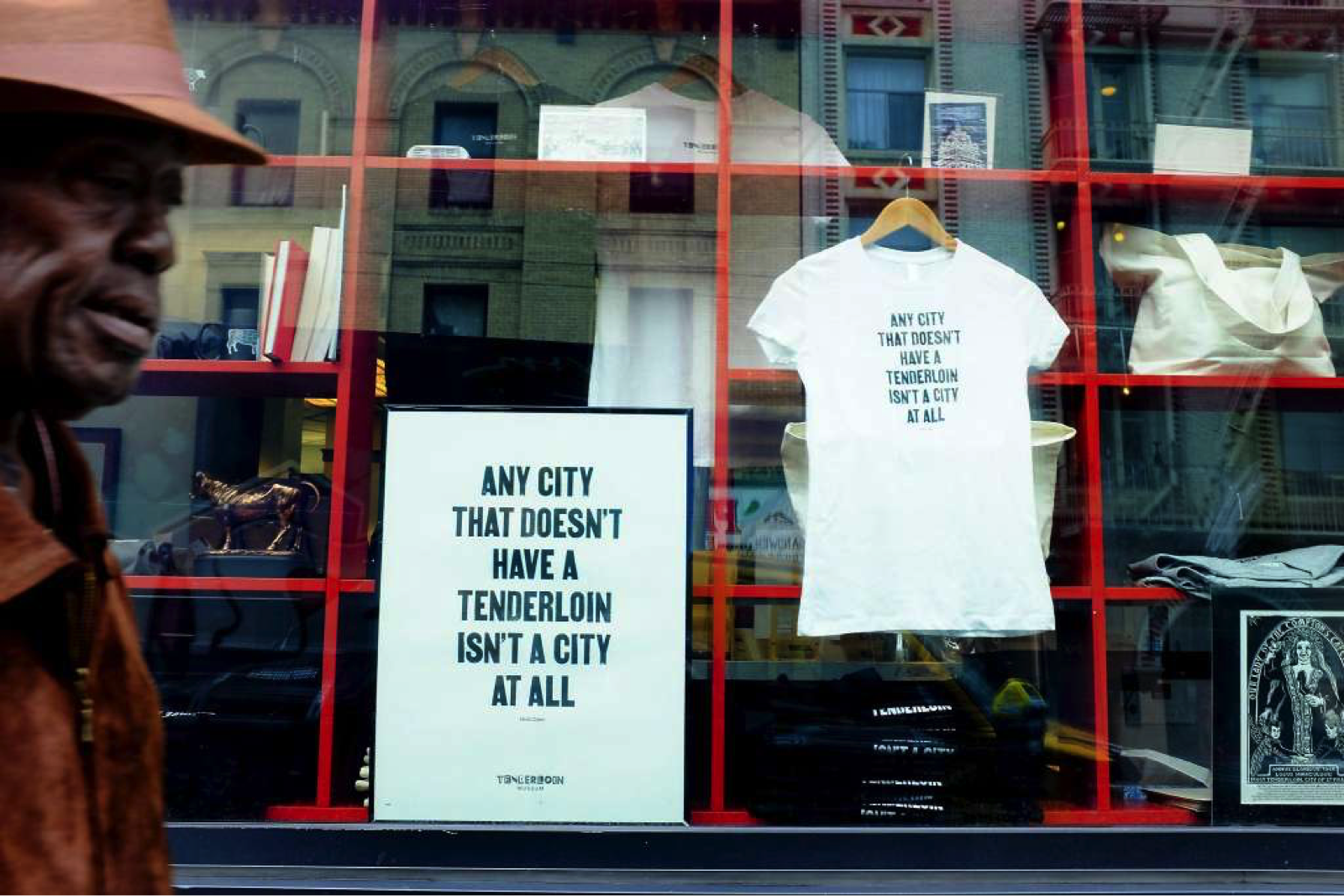Photo Credit: Santiago Mejia, The Chronicle
In one of two opinion pieces solicited by the SF Chronicle about the Tenderloin on January 4th, Director of Tenderloin Housing Clinic (THC) Randy Shaw shares his view on the neighborhood’s ability to retain its character while welcoming an unprecedented amount of economic development in recent years. Shaw touches on much of these developments, large and small, as well as historically significant factors which further define the character of the Tenderloin. While he lauds much of this effort, Shaw posits that pervasive open air drug dealing is the biggest obstacle holding the Tenderloin back from its full potential.
From the article:
The Tenderloin has made great strides in recent years. In 2009, the neighborhood’s core 31 blocks became the Uptown Tenderloin National Historic District, with 409 buildings included on the National Register of Historic Places. After taking office in 2011, Mayor Ed Lee aggressively promoted the Tenderloin’s economic revitalization. He offered tax benefits and facade- and neon sign-restoration grants for investors in new Tenderloin businesses and secured funding for new streetlights throughout the neighborhood.
The opening of the Tenderloin Museum in 2015 catalyzed the arrival of the nationally acclaimed 826 Valencia Tenderloin Center writing program as well as nearby businesses like the Black Cat jazz club (where Warriors star Steph Curry and his wife, chef Ayesha Curry, have been onstage) and the acclaimed Onsen Bath and Restaurant. PianoFight is a multipurpose entertainment venue, bar and restaurant that brings people from across the city to the Tenderloin on a nightly basis. The San Francisco Office of Economic and Workforce Development provided key city support for all of these new businesses. There has been more private business investment in the Tenderloin in the past five years than in the preceding 40.
The Tenderloin will also see construction begin on four major private housing developments in 2018. The arrival of new residents and retail spaces in these long-underutilized sites at 950-974 Market, 1028 Market and 1066 Market will be a game-changer for this critical stretch of Mid-Market and the Tenderloin. Three of the developments have frontage on Market Street in Mid-Market (between Fifth and 10th streets). These projects fill land long occupied by parking lots and vacant buildings. The fourth, a project on a block of Larkin Street in Little Saigon, will increase foot traffic and public safety in that popular restaurant corridor.
Long starved for quality open space, the Tenderloin saw the reopening of Boeddeker Park in December 2014 after a $9.3 million renovation. Macaulay Park and the Turk-Hyde tot lot will be renovated in the next two years. And Tenderloin kids will soon be a short walk from the new $10 million Civic Center Park playgrounds funded by the Helen Diller Foundation.
As chain stores dominate most urban neighborhoods, the Tenderloin offers historic buildings and independent small businesses. Also attractive is its central location. Residents can walk to jobs in downtown, Civic Center, Union Square and SoMa, and ride bikes or take a short transit ride to Mission Bay or the Mission. The neighborhood’s new property owners appreciate the Tenderloin’s historic, working-class character; they have proved more committed to enhancing the community’s future than longtime absentee owners.
But the Tenderloin still struggles to become a safe, healthy and economically productive neighborhood. A level of street drug dealing occurs in the Tenderloin that the police would not tolerate for a week in other neighborhoods. This open dealing continues year after year in a community of more than 3,000 children and thousands of seniors, disabled and other residents particularly vulnerable to street crime.
Read Randy Shaw’s full opinion piece here. Shaw followed this SF Chronicle article with the first in a series of posts in Beyond Chron.
What are your thoughts? Let us know.



Comments are closed.